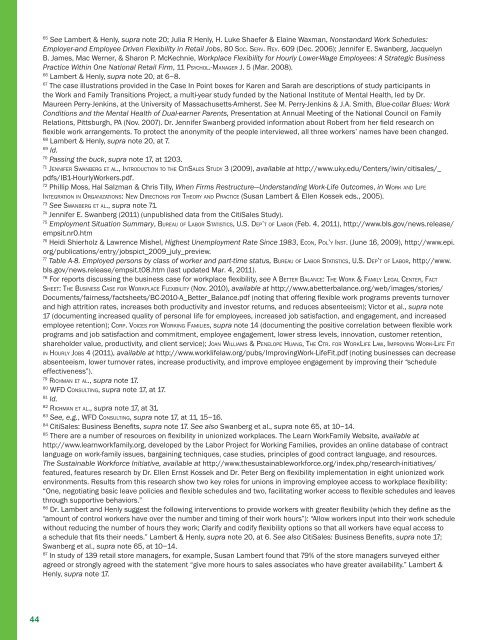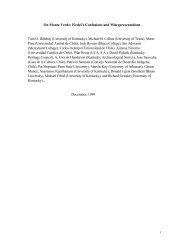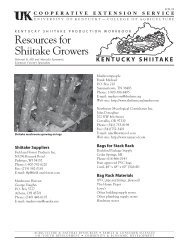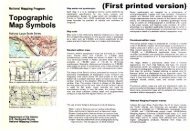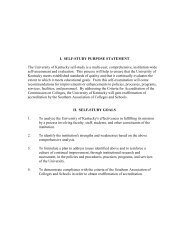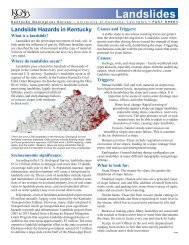Flexible Workplace Solutions for Low-Wage Hourly Workers
Flexible Workplace Solutions for Low-Wage Hourly Workers
Flexible Workplace Solutions for Low-Wage Hourly Workers
Create successful ePaper yourself
Turn your PDF publications into a flip-book with our unique Google optimized e-Paper software.
65<br />
See Lambert & Henly, supra note 20; Julia R Henly, H. Luke Shaefer & Elaine Waxman, Nonstandard Work Schedules:<br />
Employer-and Employee Driven Flexibility in Retail Jobs, 80 SOC. SERV. REV. 609 (Dec. 2006); Jennifer E. Swanberg, Jacquelyn<br />
B. James, Mac Werner, & Sharon P. McKechnie, <strong>Workplace</strong> Flexibility <strong>for</strong> <strong>Hourly</strong> <strong>Low</strong>er-<strong>Wage</strong> Employees: A Strategic Business<br />
Practice Within One National Retail Firm, 11 PSYCHOL.-MANAGER J. 5 (Mar. 2008).<br />
66<br />
Lambert & Henly, supra note 20, at 6–8.<br />
67<br />
The case illustrations provided in the Case In Point boxes <strong>for</strong> Karen and Sarah are descriptions of study participants in<br />
the Work and Family Transitions Project, a multi-year study funded by the National Institute of Mental Health, led by Dr.<br />
Maureen Perry-Jenkins, at the University of Massachusetts-Amherst. See M. Perry-Jenkins & J.A. Smith, Blue-collar Blues: Work<br />
Conditions and the Mental Health of Dual-earner Parents, Presentation at Annual Meeting of the National Council on Family<br />
Relations, Pittsburgh, PA (Nov. 2007). Dr. Jennifer Swanberg provided in<strong>for</strong>mation about Robert from her fi eld research on<br />
fl exible work arrangements. To protect the anonymity of the people interviewed, all three workers’ names have been changed.<br />
68<br />
Lambert & Henly, supra note 20, at 7.<br />
69<br />
Id.<br />
70<br />
Passing the buck, supra note 17, at 1203.<br />
71<br />
JENNIFER SWANBERG ET AL., INTRODUCTION TO THE CITISALES STUDY 3 (2009), available at http://www.uky.edu/Centers/iwin/citisales/_<br />
pdfs/IB1-<strong>Hourly</strong><strong>Workers</strong>.pdf.<br />
72<br />
Phillip Moss, Hal Salzman & Chris Tilly, When Firms Restructure—Understanding Work-Life Outcomes, in WORK AND LIFE<br />
INTEGRATION IN ORGANIZATIONS: NEW DIRECTIONS FOR THEORY AND PRACTICE (Susan Lambert & Ellen Kossek eds., 2005).<br />
73<br />
See SWANBERG ET AL., supra note 71.<br />
74<br />
Jennifer E. Swanberg (2011) (unpublished data from the CitiSales Study).<br />
75<br />
Employment Situation Summary, BUREAU OF LABOR STATISTICS, U.S. DEP’T OF LABOR (Feb. 4, 2011), http://www.bls.gov/news.release/<br />
empsit.nr0.htm<br />
76<br />
Heidi Shierholz & Lawrence Mishel, Highest Unemployment Rate Since 1983, ECON, POL’Y INST. (June 16, 2009), http://www.epi.<br />
org/publications/entry/jobspict_2009_july_preview.<br />
77<br />
Table A-8. Employed persons by class of worker and part-time status, BUREAU OF LABOR STATISTICS, U.S. DEP’T OF LABOR, http://www.<br />
bls.gov/news.release/empsit.t08.htm (last updated Mar. 4, 2011).<br />
78<br />
For reports discussing the business case <strong>for</strong> workplace fl exibility, see A BETTER BALANCE: THE WORK & FAMILY LEGAL CENTER, FACT<br />
SHEET: THE BUSINESS CASE FOR WORKPLACE FLEXIBILITY (Nov. 2010), available at http://www.abetterbalance.org/web/images/stories/<br />
Documents/fairness/factsheets/BC-2010-A_Better_Balance.pdf (noting that offering fl exible work programs prevents turnover<br />
and high attrition rates, increases both productivity and investor returns, and reduces absenteeism); Victor et al., supra note<br />
17 (documenting increased quality of personal life <strong>for</strong> employees, increased job satisfaction, and engagement, and increased<br />
employee retention); CORP. VOICES FOR WORKING FAMILIES, supra note 14 (documenting the positive correlation between fl exible work<br />
programs and job satisfaction and commitment, employee engagement, lower stress levels, innovation, customer retention,<br />
shareholder value, productivity, and client service); JOAN WILLIAMS & PENELOPE HUANG, THE CTR. FOR WORKLIFE LAW, IMPROVING WORK-LIFE FIT<br />
IN HOURLY JOBS 4 (2011), available at http://www.worklifelaw.org/pubs/ImprovingWork-LifeFit.pdf (noting businesses can decrease<br />
absenteeism, lower turnover rates, increase productivity, and improve employee engagement by improving their “schedule<br />
effectiveness”).<br />
79<br />
RICHMAN ET AL., supra note 17.<br />
80<br />
WFD CONSULTING, supra note 17, at 17.<br />
81<br />
Id.<br />
82<br />
RICHMAN ET AL., supra note 17, at 31.<br />
83<br />
See, e.g., WFD CONSULTING, supra note 17, at 11, 15–16.<br />
84<br />
CitiSales: Business Benefi ts, supra note 17. See also Swanberg et al., supra note 65, at 10–14.<br />
85<br />
There are a number of resources on fl exibility in unionized workplaces. The Learn WorkFamily Website, available at<br />
http://www.learnworkfamily.org, developed by the Labor Project <strong>for</strong> Working Families, provides an online database of contract<br />
language on work-family issues, bargaining techniques, case studies, principles of good contract language, and resources.<br />
The Sustainable Work<strong>for</strong>ce Initiative, available at http://www.thesustainablework<strong>for</strong>ce.org/index.php/research-initiatives/<br />
featured, features research by Dr. Ellen Ernst Kossek and Dr. Peter Berg on fl exibility implementation in eight unionized work<br />
environments. Results from this research show two key roles <strong>for</strong> unions in improving employee access to workplace fl exibility:<br />
“One, negotiating basic leave policies and fl exible schedules and two, facilitating worker access to fl exible schedules and leaves<br />
through supportive behaviors.”<br />
86<br />
Dr. Lambert and Henly suggest the following interventions to provide workers with greater fl exibility (which they defi ne as the<br />
“amount of control workers have over the number and timing of their work hours”): “Allow workers input into their work schedule<br />
without reducing the number of hours they work; Clarify and codify fl exibility options so that all workers have equal access to<br />
a schedule that fi ts their needs.” Lambert & Henly, supra note 20, at 6. See also CitiSales: Business Benefi ts, supra note 17;<br />
Swanberg et al., supra note 65, at 10–14.<br />
87<br />
In study of 139 retail store managers, <strong>for</strong> example, Susan Lambert found that 79% of the store managers surveyed either<br />
agreed or strongly agreed with the statement “give more hours to sales associates who have greater availability.” Lambert &<br />
Henly, supra note 17.<br />
44


